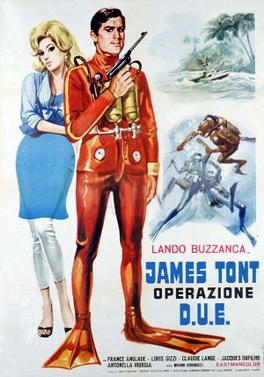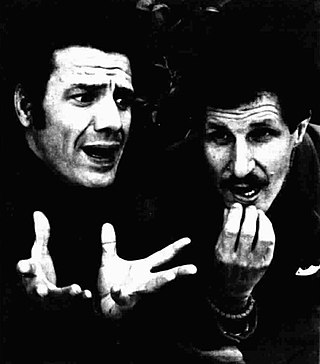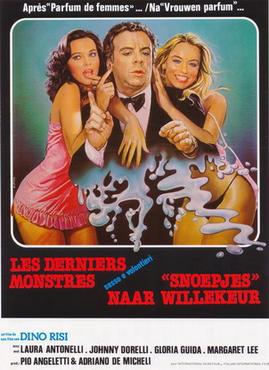
Sword-and-sandal, also known as peplum, is a subgenre of largely Italian-made historical, mythological, or biblical epics mostly set in the Greco-Roman antiquity or the Middle Ages. These films attempted to emulate the big-budget Hollywood historical epics of the time, such as Samson and Delilah (1949), Quo Vadis (1951), The Robe (1953), The Ten Commandments (1956), Ben-Hur (1959), Spartacus (1960), and Cleopatra (1963). These films dominated the Italian film industry from 1958 to 1965, eventually being replaced in 1965 by spaghetti Western and Eurospy films.

Francesco Benenato, known as Franco Franchi, was an Italian actor, comedian and singer.

Richard Harrison is an American actor, writer, director and producer. Harrison was very prolific and worked with most of the well-known names in European B-movies during the 1960s and 1970s, also branching out to exploitation films shot all over the world in the early 1970s.

Fernando Sancho Les was a Spanish actor.

Francesco "Ciccio" Ingrassia was an Italian actor, comedian and film director.

Catherine Spaak was a French-Italian actress, singer, model, and media personality. A member of the Spaak family, she was known as an iconic "It girl" in Italy during the 1960s, becoming a star of commedia all'italiana films, before later becoming prominent as a talk show host and media personality.

Dr. Goldfoot and the Girl Bombs is a 1966 Eurospy comedy film, made in Technicolor and directed by Mario Bava. Serving as a sequel to two unrelated films, Dr. Goldfoot and the Bikini Machine and Two Mafiosi Against Goldginger, the film stars Vincent Price, Fabian, Francesco Mulé, Laura Antonelli, and the Italian comic duo Franco and Ciccio.

Rosalba Neri is a retired Italian actress.

Roberta Corti, better known by her stage name Betty Curtis, was an Italian singer active from 1957 to 2004.

Elsa Martinelli was an Italian actress and fashion model. Described by The Guardian as a "versatile star of Hollywood’s international years whose work spanned romantic comedies, period epics and spaghetti westerns", she went on to star opposite Kirk Douglas, John Wayne, Robert Mitchum, Charlton Heston, and Anthony Quinn, be directed by André De Toth, Vittorio De Sica, Howard Hawks and Orson Welles on both sides of the Atlantic.

Eurospy film, or Spaghetti spy film, is a genre of spy films produced in Europe, especially in Italy, France, and Spain, that either sincerely imitated or else parodied the British James Bond spy series feature films. The first wave of Eurospy films was released in 1964, two years after the first James Bond film, Dr. No, and in the same year as the premiere of what many consider to be the apotheosis of the Bond series, Goldfinger. For the most part, the Eurospy craze lasted until around 1967 or 1968. In Italy, where most of these films were produced, this trend replaced the declining sword and sandal genre.

Nino Taranto was an Italian film actor. He appeared in more than 80 films between 1924 and 1971.
Sergio Grieco was an Italian film director and screenwriter.

Linda Sini was an Italian actress.

Franco Ressel was an Italian film actor. He appeared in more than 120 films between 1961 and 1985. He was born in Naples, Italy and died in Rome, Italy.

Marilù Tolo is an Italian film actress. She appeared in more than 60 films between 1960 and 1985.

Franco and Ciccio were a comic comedy duo formed by Italian actors Franco Franchi (1928–1992) and Ciccio Ingrassia (1922–2003), particularly popular in the 1960s and 1970s. Their collaboration began in 1954 in the theatre field, and ended with Franchi's death in 1992. The two made their cinema debuts in 1960 with the film Appuntamento a Ischia. They remained active until 1984 when their last film together, Kaos, was shot, although there were some interruptions in 1973 and from 1975 to 1980.

Enio Girolami, sometimes credited as Thomas Moore, was an Italian film and television actor.

Sesso e volentieri is a 1982 Italian anthology-comedy film directed by Dino Risi. The film consists in ten segments, all starred by Johnny Dorelli and all having sex and sexual perversions as main theme.

Nino Terzo was an Italian actor.




















